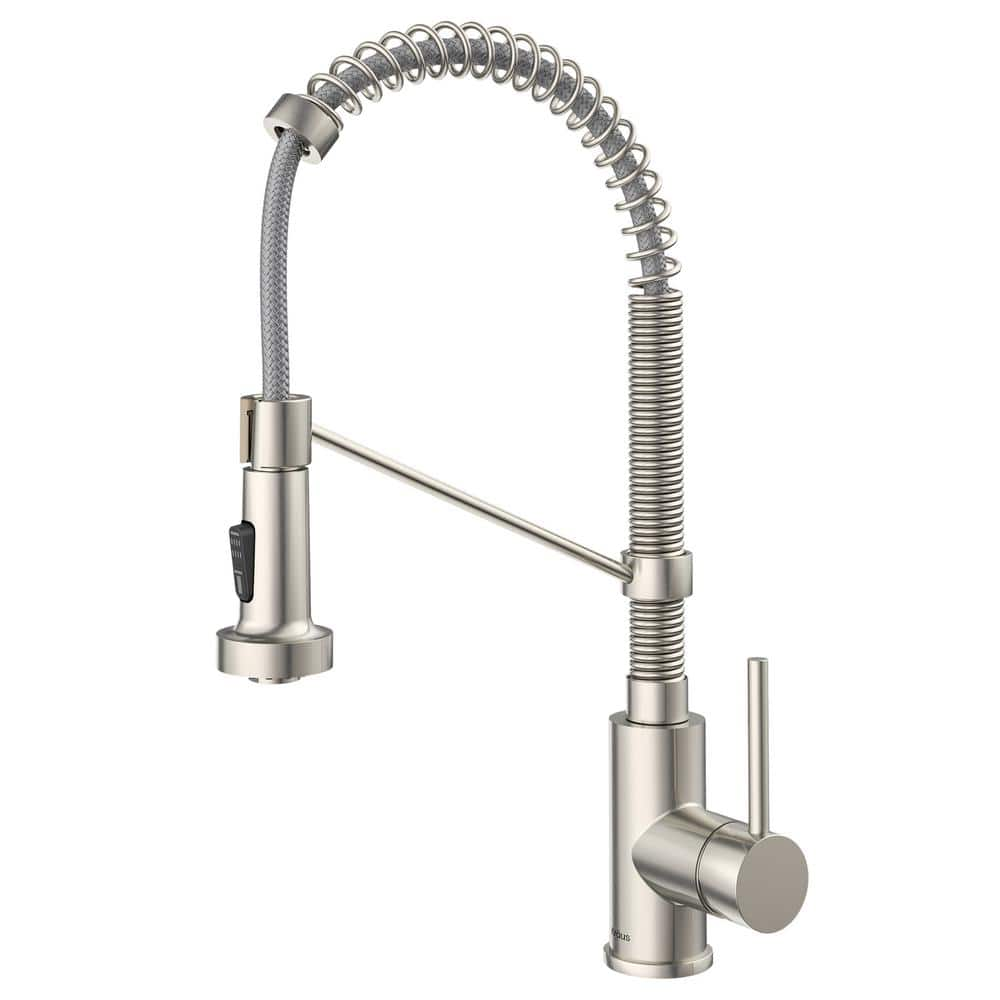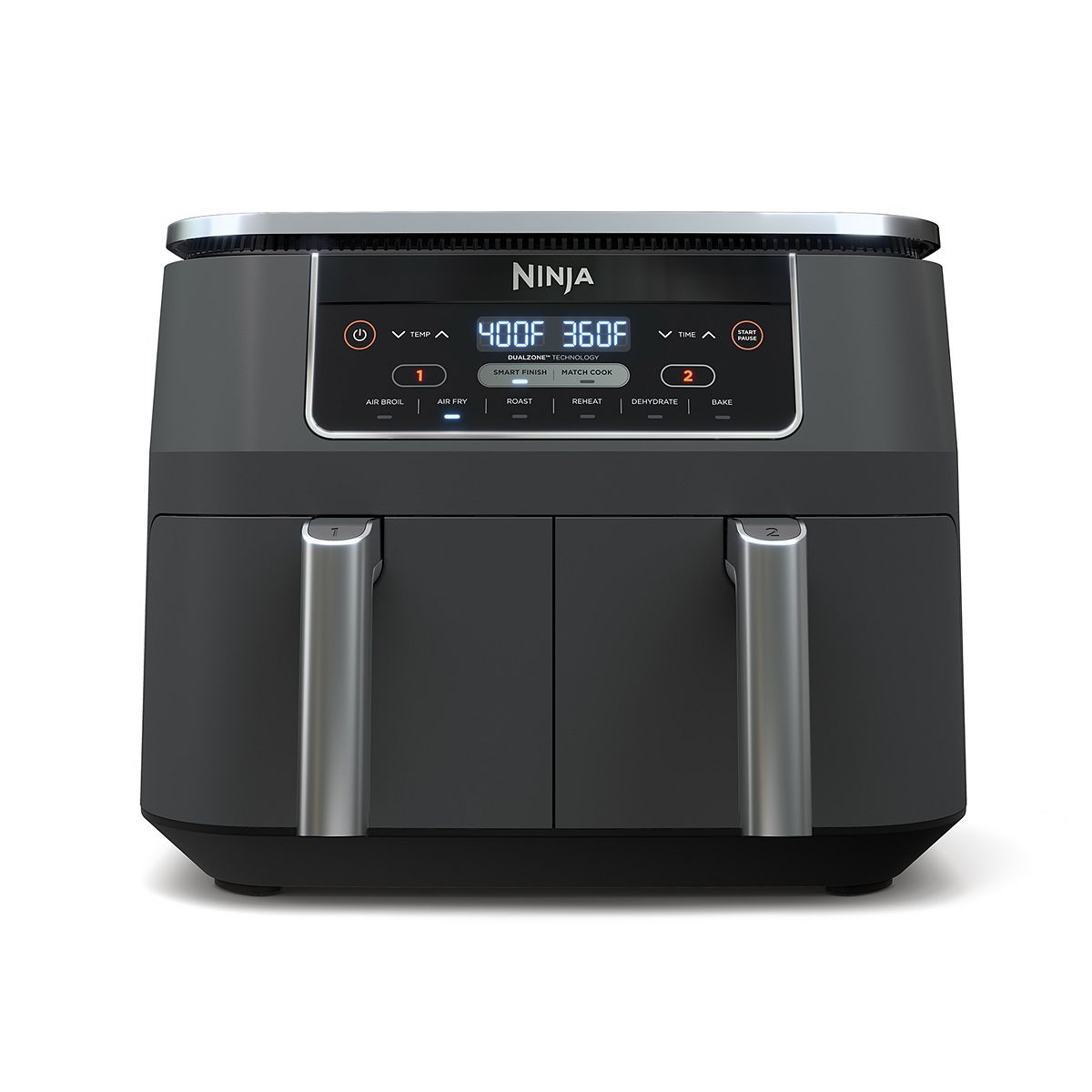KRAUS Bolden Single-Handle Pull-Down Sprayer Kitchen Faucet with Dual Function Sprayhead in Stainless Steel
Features premium corrosion resistant finish and dual mode sprayer. 18 in. faucet height, 60 in. pull-down hose, 180° swivel. Includes all hardware for 1 hole installation.
The centerpiece of your dream kitchen has arrived with Bolden. Available in five finishes, the Bolden commercial kitchen faucet is designed to transform any kitchen into a high-end culinary workspace. The industrial pull-down faucet is configured at a compact 18″ height to fit under most cabinets. A retractable 16″ hose provides superior maneuverability, and the dual-function sprayhead gives users the ability to switch from splash-free aerated stream to powerful spray in a snap.
- Faucet height: 18 in.
- Professional style for the home kitchen: featuring an industrial-style open spring spout with an ergonomic pull-down spray head
- Perfect fit: optimized for residential use, the bolden features a compact 18 in. height to fit underneath almost any kitchen cabinet
- Unique Pull-Down Commercial Design with Flexible Hose: The look of a professional faucet combined with the convenience of a smooth-retract nylon sprayer hose with extended 16″ range
- Dual-function spray head with rocker switch: 2-spray modes allow you to easily go from aerated stream to powerful spray, covering everything from rinsing vegetables to heavy scrubbing
- Built for long-lasting performance: heavy-duty lead-free brass construction and a best-in-industry ceramic cartridge provides a lifetime of drip free use
- High arc spout offers ample height clearance for filling and cleaning large pots and pitchers
- KRAUS finishes resist corrosion and rust, surpass industry durability standards and will not fade over time; a wide range of choices is available: stainless steel, chrome, matte black, stainless steel/chrome or stainless steel/matte black
- Sophisticated stainless-steel finish reflects the beauty of stainless-steel appliances and creates an elegant, refined, easy-to-match look that coordinates beautifully with any kitchen decor
- Faucet swivels 180 for a broad range of motion in and around the sink
- Easy-clean spray nozzles: maintenance is as simple as removing limescale and mineral build-up from the soft silicone nozzles with the swipe of a finger, for a long-lasting powerful flow
- Smart single handle design: handle operates with a 90-forward rotation, allowing for installation in tighter spaces with no backsplash clearance needed
- Easy-to-use handle: simple and streamlined single lever design offers effortless and precise control of water temperature and volume
- Eco-friendly faucet: water-saving aerator reduces water waste without sacrificing pressure by providing an efficient 1.8 GPM flow rate
- Installation-Ready: For your convenience, faucet comes with pre-attached 22″ waterlines and mounting hardware
- Lifetime Limited Warranty: Experience unmatched quality with best-in-industry components and durable heavy-duty construction
- Certifications: cUPC (UPC&CSA), NSF/ANSI Standard 61 certified by IAPMO, NSF/ANSI Standard 372 certified by IAPMO, AB1953, EPA, CALGreen, MASS, FTC, DOE, CEC and ADA
Additional information
| Connection size (in.) | 3/8 In. |
|---|---|
| Extended Hose Length (in.) | 16 |
| Faucet Height (in.) | 18 |
| Spout Height (in.) | 6.38 |
| Certifications and Listings | CSA Certified |
| Manufacturer Warranty | Limited Lifetime |






by Terry
The faucet really “pops” and has totally changed the look of the area in the kitchen.
by Lisbeth
It’s amazing and just as described. Loving it.